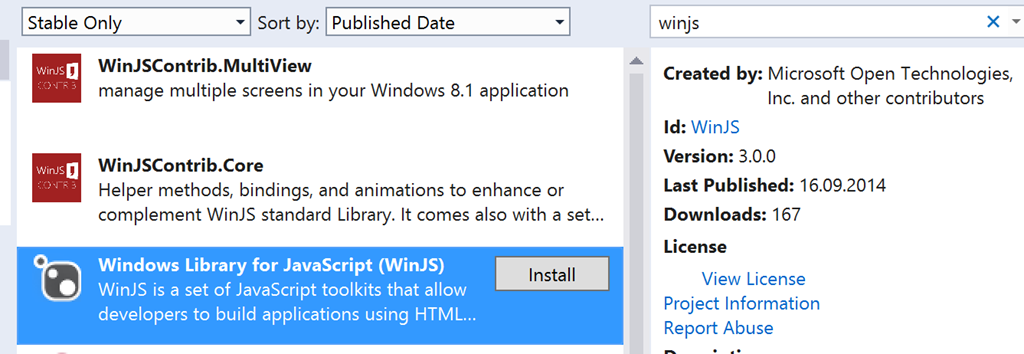

To use the Repeater example (where it uses an inline template): You'd declare this control again on the tbody element so it creates tr children in the right place. Then call with the root element of that item and the item from the data source, which will set up the data binding you want. In the controls' constructor, iterate through the Binding.List, rendering a copy of template for each item in the list. The template would contain your data-win-bind attributes. Define a constructor with and make sure you have options through which you can declaratively specify the data source and the template.
#Winjs tabview windows 8#
If you're targeting Windows 8 you won't have the Repeater, of course, but it's not too complicated to create one of your own (borrowing from the Win8.1 Repeater sources if you want). Note that you'll want to use a for your headings and declare the control on the so it can render copies of the template that has as the root element.
#Winjs tabview windows 8.1#
In Windows 8.1 Preview there is a new control called the Repeater that serves this exact purpose, and the HTML Repeater control sample demonstrates it in the context of a. What you want instead is a simple custom control that can take a and render a template as direct children of that control.

So count the ListView out for this purpose. That is, the template gets rendered for each item in the data source as children of the div where you declare the ListView, not at the place where you declare the template.Īlthough you could declare the ListView as a child of the table, it won't quite work there either because the ListView creates a deep div structure below the element where you declare it. The ListView will attempt to use that template to render itself, but as it generates and elements within its own div (outside of a ) it won't really work.

In your markup, the template elements will actually be removed from the DOM and not render in the table. So it doesn't really make sense to try to combine the two. That's why there's a collection class and a WinJS.UI.ListView control as separate entities.Ī table is one way to present a collection a ListView is another. The key thing is to separate the idea of the collection-your data source-from the control that you use to present it. If your goal is to render a table, the ListView is not what you want.
#Winjs tabview code#
I would definately not want to create table dynamically from view's code behind. The reason why I use listView is that I am working with ViewModels which expose collections via properties - I just want to bind data to the view and show it using specific template. I would like to achieve effect similar to this one (I used styling from that example in my view): Versatility WinJS supports motion, touch, keyboard and screen reader input. However, the result is not what I expect at all: WinJS makes it possible to add Windows UI controls in HTML, such as ListView, FlipView, and SplitView, features like virtualizing collections, and high-quality infrastructure like page controls, promises, data-binding, and a template engine. The navigation state needs to be updated when it’s called, otherwise the change is dropped. onIndexChange (required) It is a callback which is called on tab change, it receives the index of the new tab as argument. I would like to render ListView in a table. TabView is a controlled component, which means the index needs to be updated via the onIndexChange callback. All rights reserved.Licensed under the BSD License.*/typeof YUI != "undefined" & (YUI.I am working on HTML/JS Win8 store app. The TabView is NOT displaying a New Tab whenever a New Document is added to the Collection. I have gone through the Official Documentation and GitHub Samples but I couldn't find a solution. But still I want to know a workaround for my issue as I want to use TabView in my App. At this time we dont have plans to invest in new features or feature requests. I know that WinUI 3 is still in Preview stage for UWP. Adding a TabView A TabView works by defining the object in the usual SwiftUI way. For example, if you use the Weather app or the Measurements app, you’ll see the TabView. Apple has started using the TabView more commonly in their applications. Output: "/*YUI 3.17.2 (build 9c3c78e)Copyright 2014 Yahoo! Inc. Microsoft is committed to making sure that WinJS continues to run for existing customers. A TabView will allow you to switch between screens quickly and can be very useful for your users.


 0 kommentar(er)
0 kommentar(er)
